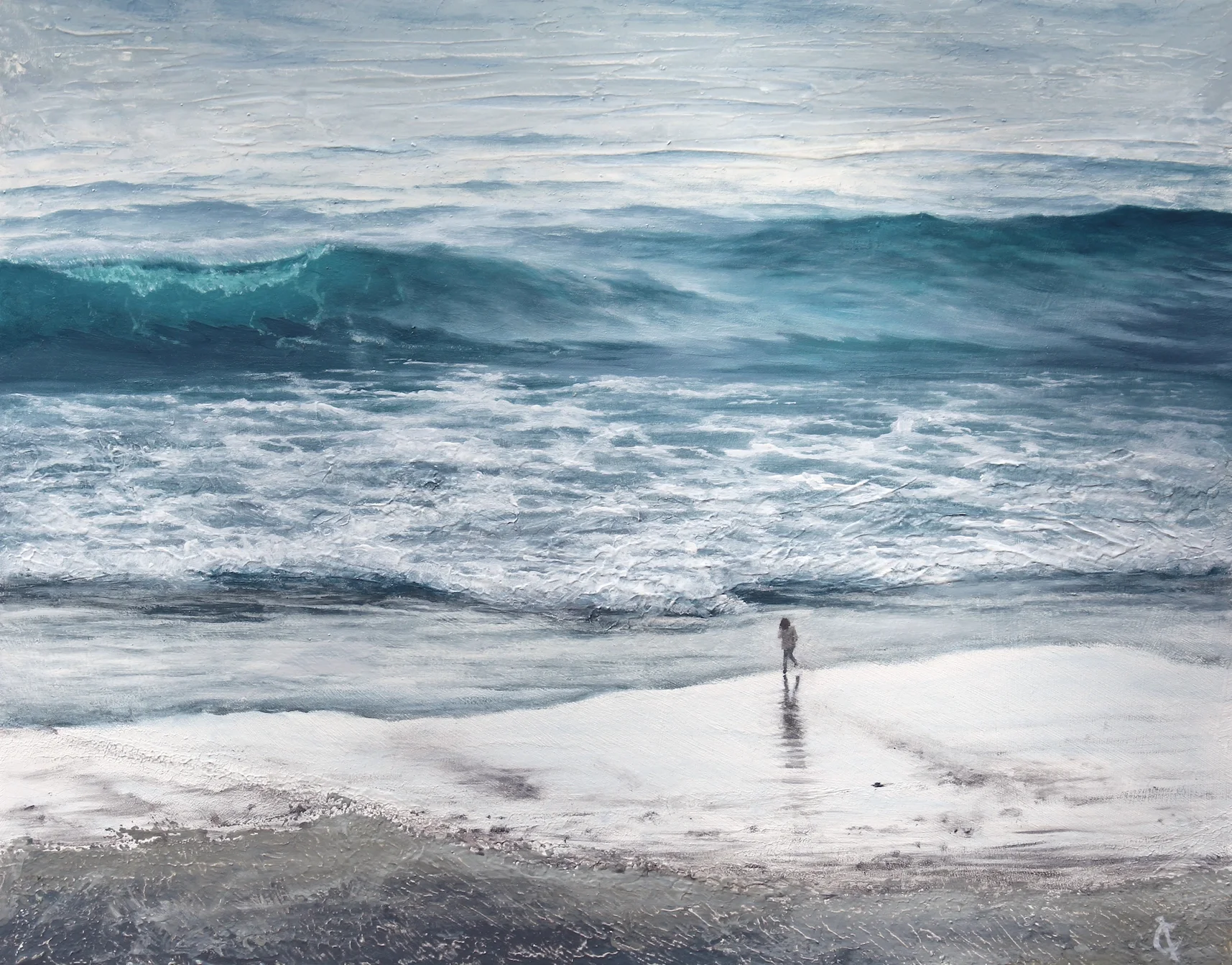“Viewing mid-range Fractals reduces your physiological response to stress by up to 60%.”
So what is a fractal?
A fractal is a pattern that repeats itself infinitely across different scales (sizes) – snowflakes, trees, and ocean waves are all fractals.
A 1986 NASA study demonstrated that participants who viewed images consisting of fractal patterns of nature, experienced a 44% decrease in physical stress response.[4]
Since then, other studies have shown even greater reductions in stress in people who viewed various images and artwork containing natural fractals (e.g. paintings containing cloud formations, ocean horizons, breaking waves, and sand dunes).
“it appears that people have hardwiring that responds to certain forms of fractals in nature…It seems this stress reduction effect occurs because of a certain physiological resonance within the eye. Some research indicates that certain types of artwork that have such patterns can also produce a relaxation effect.”
By contrast, according to the same NASA study mentioned above, viewing images that contain artificial geometric shapes actually resulted in a 13% increase in stress response in those who participated in the study.[4]
This is important, considering that in our culture we are surrounded by such artificial geometric patterns: in our architecture and sometimes in the abstract art we hang on our walls.
As we have moved away from nature and into skyscrapers and concrete jungles, we have inadvertently removed ourselves from what calms and comforts us, and have instead surrounded ourselves with shapes and images that increase our stress response.
All of my artworks are created with a conscious intent of highlighting natural fractal patterns.
You no longer need to be near the ocean to experience its powerful benefits. They can be yours, if you simply incorporate them into your own environment.
“The effect does not have to stop when you come back indoors, either. <...>
Simply having these fractal patterns in our peripheral vision has a constant soothing effect on the mind and mood.”
References:
1. Lambrau, Peter, Ph.D. “Fun With Fractals.” Psychology Today. Psychology Today, 07 Sept. 2012. Web. 24 July 2016. .
2. Rosch, Paul J. M.D., F.A.C.P. “Why Stress Is A Far More Important Cause Of Coronary Disease Than Cholesterol.” September 2010. PowerPoint Presentation.
3. Harden, Seth. “Stress Statistics.” Statistic Brain. Statistic Brain Research Institute, American Institute of Stress, NY, 18 Oct. 2015. Web. 24 July 2016. .
4. R., Taylor P. “Reduction of Physiological Stress Using Fractal Art and Architecture.” LEONARDO 39.3 (2006): 245-51. Uoregon.edu. MIT Publishing, 01 June 2006. Web. 24 July 2016.

